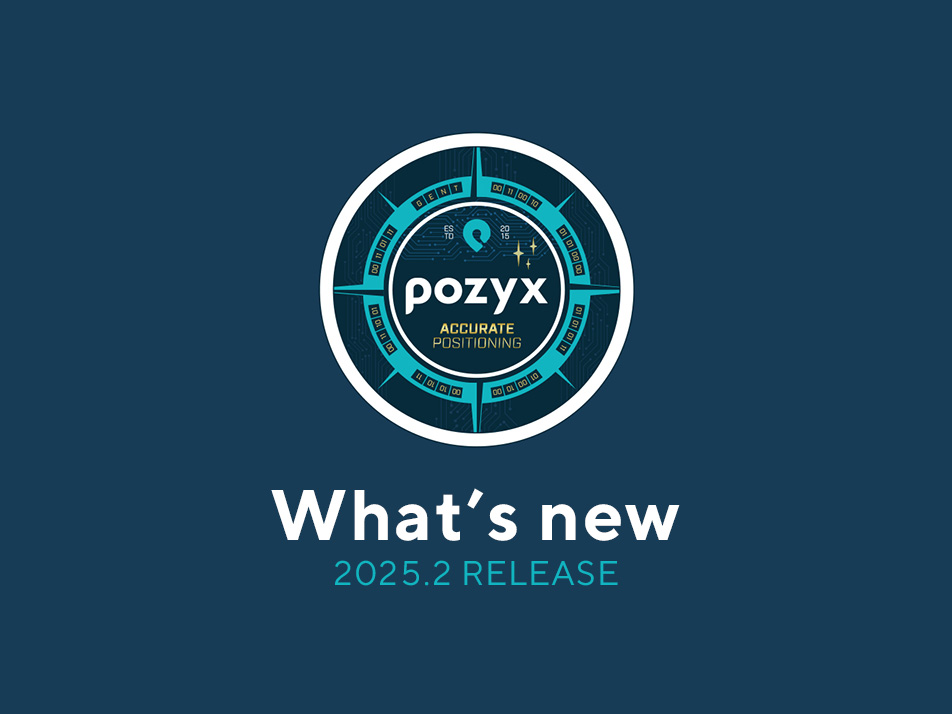5 Innovations in GPS asset tracking
In today's fast-paced business landscape, efficient asset management and asset monitoring is the cornerstone of success for many industries. As industries expand and operations become more complex, the need for precise asset tracking solutions has never been more critical. Today, GPS asset tracking is already successfully applied in supply chain visibility, container tracking, returnable packaging, cold chain monitoring, and many more applications. In this comprehensive guide, we delve into the cutting-edge innovations shaping the world of GPS asset tracking.
1. Low-power GPS asset tracking in the cloud
Traditionally, GPS asset trackers have calculated their location on the device and transmitted the calculated location through a cellular network to some asset tracking software. However, this approach has significantly limited the battery life of GPS asset trackers in the past, because of the power consumption of getting a GPS location fix. Recently, a new set of GPS trackers have emerged that no longer calculate the position on the device resulting in significant power savings. These devices capture only the minimal required information from the GPS receiver, and send this to the cloud, where the final location is calculated. In practice, this can result in a battery life that is a factor 10 better than traditional GPS asset trackers.
This so-called low-power GPS approach can give GPS asset trackers a battery life up to 10 years while still providing location updates several times per day. This basically results in a tracker that never requires new batteries resulting in a significant operational advantage of deploying GPS asset tracking at scale.
Discover the Pozyx Platform
The Pozyx Platform brings indoor and outdoor positioning data together to provide full asset visibility, automation and location-based insights for logistics and manufacturing.
Pozyx Platform2. Infrastructure-less indoor asset tracking
GPS is great, but one significant downfall is that it doesn’t work indoors. Buildings typically block out the signals coming from the satellites which makes tracking impossible inside buildings, or even in cities with a lot tall buildings. Traditional GPS asset trackers would simply vanish from the map until the tracker would get reception again. For lot’s of applications, this is unacceptable.
Recently, GPS asset trackers are being equipped with Wi-Fi to solve this issue. The Wi-Fi will scan the network for Wi-Fi access points and send this information to the cloud. In the cloud, the location can be resolved by using a Wi-Fi access point database that some of the big tech companies provide, such as Google which already use this method for a long time for smartphone localization. The typical accuracy of this is 10m to 40m which is sufficient to know in which building the asset is located.
For better indoor tracking accuracy, some GPS trackers also have Bluetooth equipped for Bluetooth tracking, which can increase the accuracy to 3m-5m, if a Bluetooth infrastructure is available at least. For even better accuracies, below 1m, ultra-wideband tags are the best way forward.
Nevertheless, the Wi-Fi scanning offers visibility inside buildings without requiring to measure out any infrastructure yourself. This is a major improvement to improve the reliability and visibility of GPS asset trackers.
3. Cost reductions of GPS asset tracking
Perhaps one of the most important improvements seen in GPS asset trackers recently is the cost reduction. As technologies improve and are more widely used, the cost goes down. This is definitely true for GPS asset trackers. These trackers are typically packed with multiple technologies such as a GPS, Wi-Fi, Bluetooth, IOT sensors and cellular technology. All of which, the price is going down.
Before, the cellular network technology typically represented one of the most expensive pieces of a tracker. What we see now is that for this technology, and most specifically NB-IOT, prices have decreased significantly. NB-IOT is a long-range low-power wireless technology which is part of the 4G and 5G standard and is specifically designed for low-power long-range communication in IOT sensors. A recent market study by Counterpoint research, shows that NB-IOT is massively being adopted resulting in prices going down for the hardware, as well as for the data subscriptions.

In 2023, we see that prices for GPS trackers are dropping to levels that make the return-on-investment better than ever, allowing for more wide-scale deployments.
4. IoT-enabled Sensors
The Internet of Things (IoT) has revolutionized outdoor GPS asset tracking by enabling real-time data collection and analysis. IoT-enabled (low-power) sensors provide businesses with valuable insights into asset conditions, including temperature, humidity, and motion. This data is pivotal for industries such as pharmaceuticals and food transportation, ensuring the integrity of goods throughout their journey. As these sensors are becoming increasingly low-power and low-cost, they can be added to enable additional functionality like impact detection, theft detection, and run hour monitoring, and more.
5. Cloud-Based Solutions: solving real use-cases
Cloud-based asset tracking solutions, such as the Pozyx Platform, offer unmatched scalability, allowing businesses to seamlessly expand their tracking capabilities as their operations grow. However, what's even more important, is that these solutions have matured and that they can solve a diverse set of use-cases in logistics, supply chain, returnable packaging and more. Integrating these applications has become increasingly easy through open API's (like the Omlox open location standard), and the adoption of the low-code/no-code principle results in easily configurable systems that remain extremely powerful. In the end, the true value of any asset tracking system lies in its application.

Is GPS asset tracking right for you?
As we’ve seen, GPS asset tracking solutions are continuously improving. But are they right for your application? For most outdoor tracking applications, using GPS trackers still makes the most sense, and with the additional visibility indoors, they have eliminated some of the downfalls of GPS technology alone. For more accurate sub-meter indoor tracking or for lower cost solutions, you’ll still want to look at alternatives like bluetooth or ultra-wideband tracking, at the expense of loosing some of the visibility outdoors.
Want to start with GPS asset tracking?
Frequently Asked Questions
How does the low-power GPS asset tracking method affect the real-time accuracy and reliability of location data compared to traditional GPS tracking methods?
Traditional GPS tracking devices calculate their position locally on the device and transmit this information, offering immediate updates. In contrast, low-power GPS trackers send minimal data to the cloud for location calculation, which can introduce a slight delay in obtaining location updates. Because low-power GPS sends minimal data to the cloud, some details may get lost. For example, data from a limited number of GPS satellites is sent. This may result in slightly reduced accuracy and reliability of low-power GPS as compared to traditional GPS tracking.
Are there any potential privacy concerns associated with the use of Wi-Fi scanning in GPS asset tracking for indoor locations, especially considering the involvement of large tech companies like Google in providing access point databases?
One major concern is the collection of location data without explicit consent from individuals. Wi-Fi scanning involves capturing information about nearby Wi-Fi access points to triangulate the location of devices, which could inadvertently include the tracking of individuals who are not aware of or have not consented to being tracked. This raises questions about the privacy rights of individuals and the potential for unauthorized surveillance.
Moreover, there are concerns about data security surrounding the collection and transmission of Wi-Fi scanning data. If not properly secured, this data could be vulnerable to interception or access by unauthorized parties, leading to breaches of privacy and security. Additionally, the reliance on third-party providers like Google for access point databases raises concerns about the extent to which these companies have access to tracking data and how they use it. This could lead to worries about data misuse or exploitation for commercial purposes without users' knowledge or consent.
While the article discusses cost reductions in GPS asset tracking, are there any hidden costs or ongoing expenses associated with implementing and maintaining these advanced tracking solutions that businesses should be aware of?
Along with the upfront costs of hardware and subscriptions, businesses should consider ongoing expenses such as integration with existing systems, maintenance and support, data management, regulatory compliance, and training. These factors contribute to the total cost of ownership for low-power GPS tracking solutions and should be accounted for when evaluating their implementation.

Written by
Samuel Van de Velde
CTO & Co-Founder at Pozyx
Samuel is an electrical engineer with a strong interest in location technology. Skilled in Entrepreneurship, Public Speaking, Product Management, internet of things (IoT), and Machine Learning. After graduating In 2010, he joined the Department of Telecommunications and Digital Information Processing (TELIN) to pursue a Ph.D. degree on the topic of collaborative indoor localisation. In 2015, he founded the spin-off company Pozyx out of that research.








